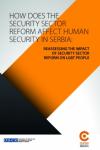Anti-LGBTI hate crime
Hate crimes against lesbian, gay, bisexual, transgender and intersex (LGBTI) people are motivated by a bias based on a person's sexual orientation, gender identity and/or sex characteristics. In some instances, LGBTI people have been portrayed by the media and politicians as a threatening and inferior group, posing a danger to public health and "traditional" structures, such as marriage and the family. LGBTI people continue to experience stigmatization and lack of legal protection from discrimination and hate crime. ODIHR's annual reporting on hate crime has included reports of physical assaults and murders, with transgender people being particularly at risk. Serious physical assaults carried out by groups, especially around pride parades, are also common features of hate crimes against LGBTI people.
States that report
Incidents were reported on these states
International Reports
OSCE Region
The Commissioner for Human Rights of the Council of Europe published a paper on the issue of “Human Rights and Gender Identity,” citing the high rate of harassment and abuse suffered by transgender persons and the increased risk of becoming victims of hate crimes.
The European Union Agency for Fundamental Rights (FRA) published the second part of its report on homophobia titled “The Social Situation”. The report includes a comparison between legal-protection standards for hate crimes and reported incidents in Member States of the European Union, and concludes that violence against LGBT persons is widespread.

